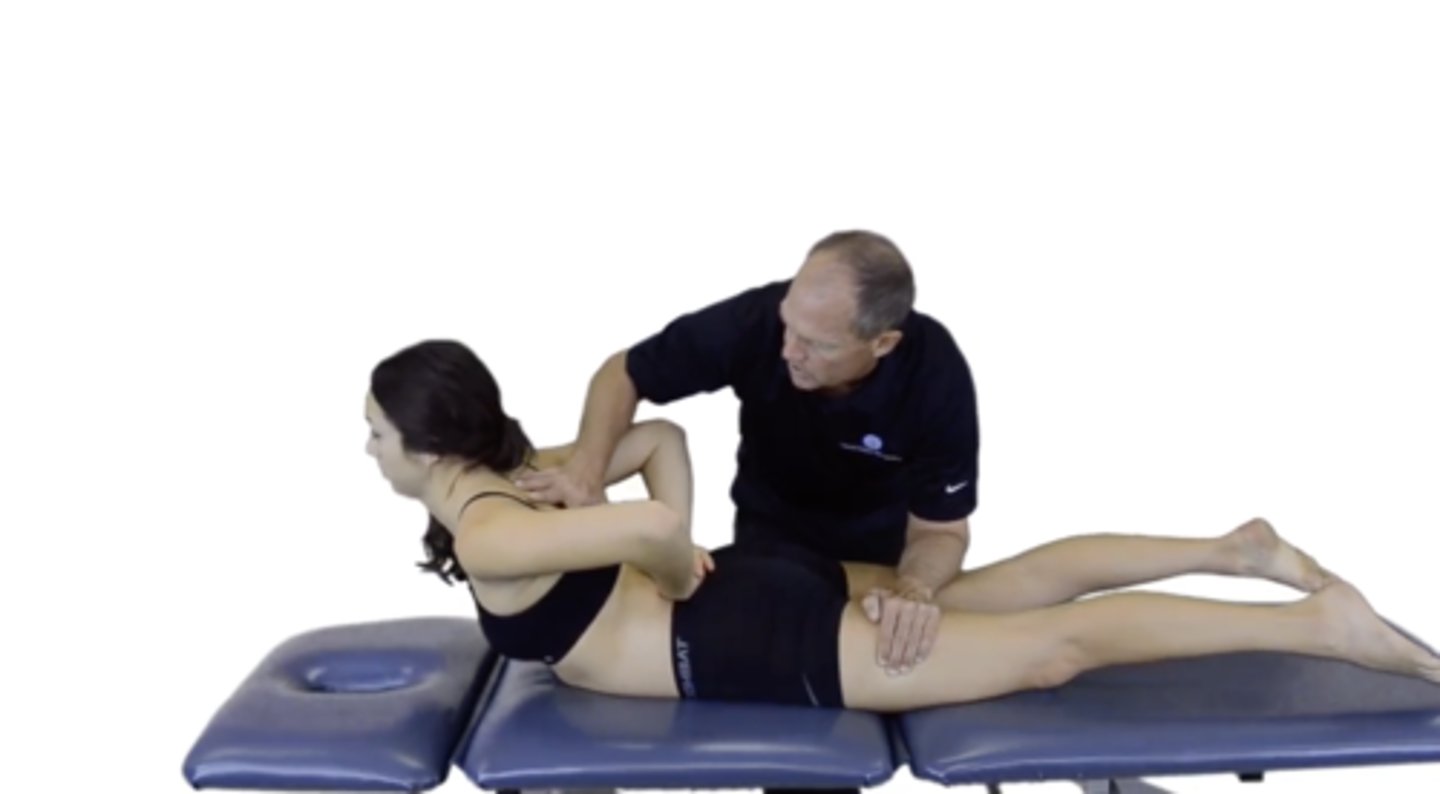ROM & MMT Assessment - LE & Back
1/39
There's no tags or description
Looks like no tags are added yet.
Name | Mastery | Learn | Test | Matching | Spaced |
|---|
No study sessions yet.
40 Terms
Hip flexion (120)
Which assessment is this? What is normal ROM?

Hip extension (20)
Which assessment is this? What is normal ROM?
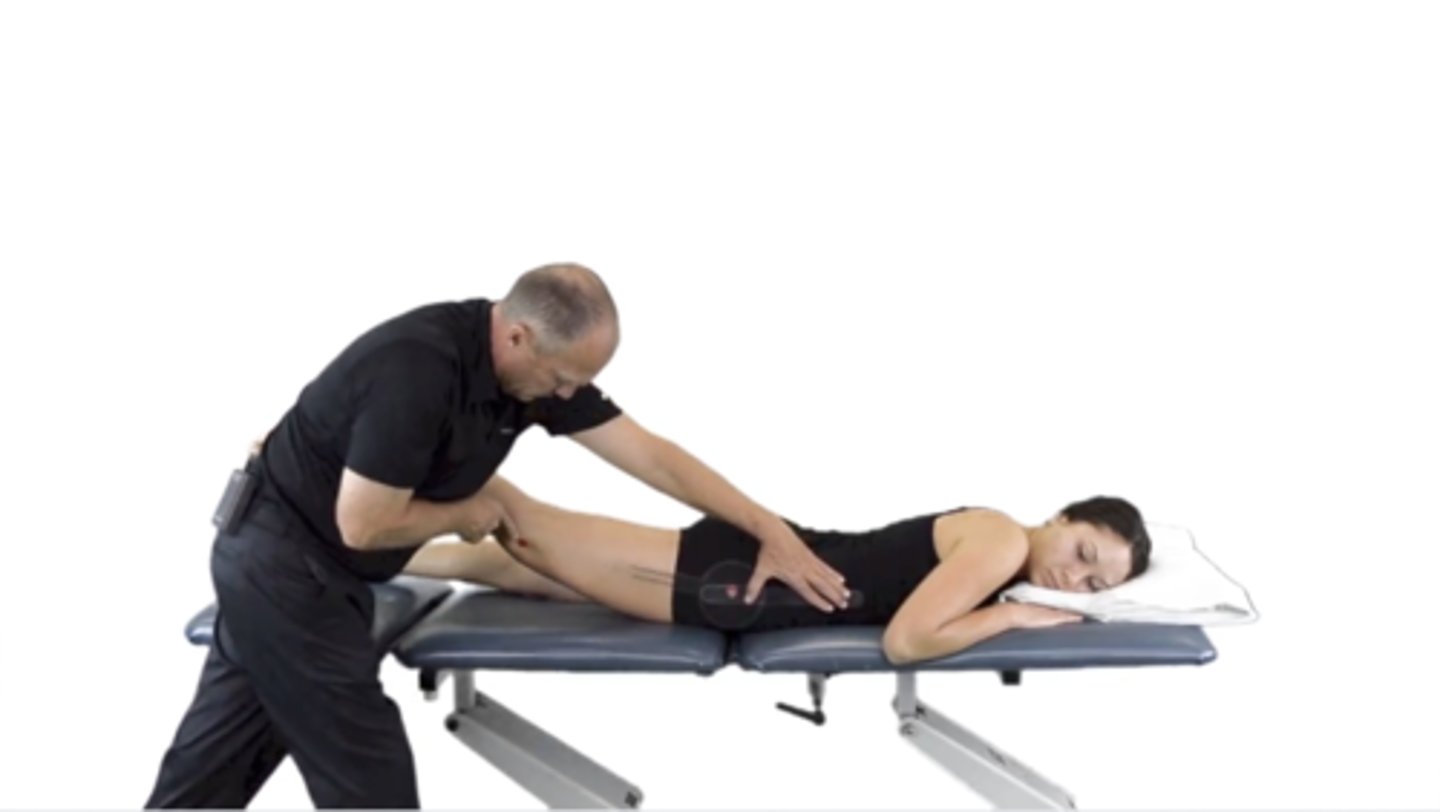
Hip abduction (45)
NOTE: make sure to measure this movement to the point of limitation or lateral flexion of trunk or pelvis (i.e., when the iliac crest starts to rise)
Which assessment is this? What is normal ROM?
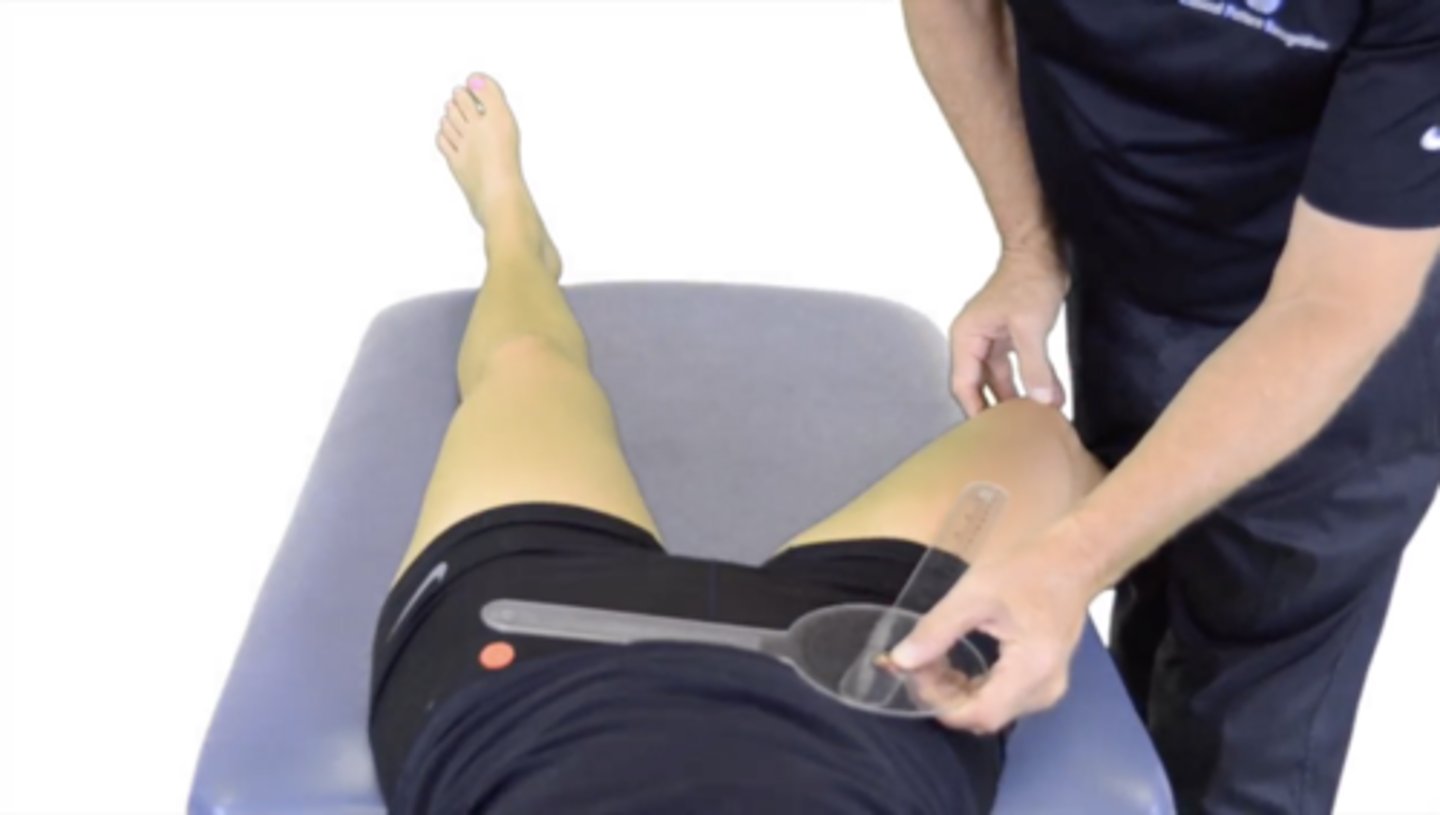
Hip adduction (20)
NOTE: pay attention to any posterior or distal movement of the extremity, as this would indicate an end-range position
Which assessment is this? What is normal ROM?
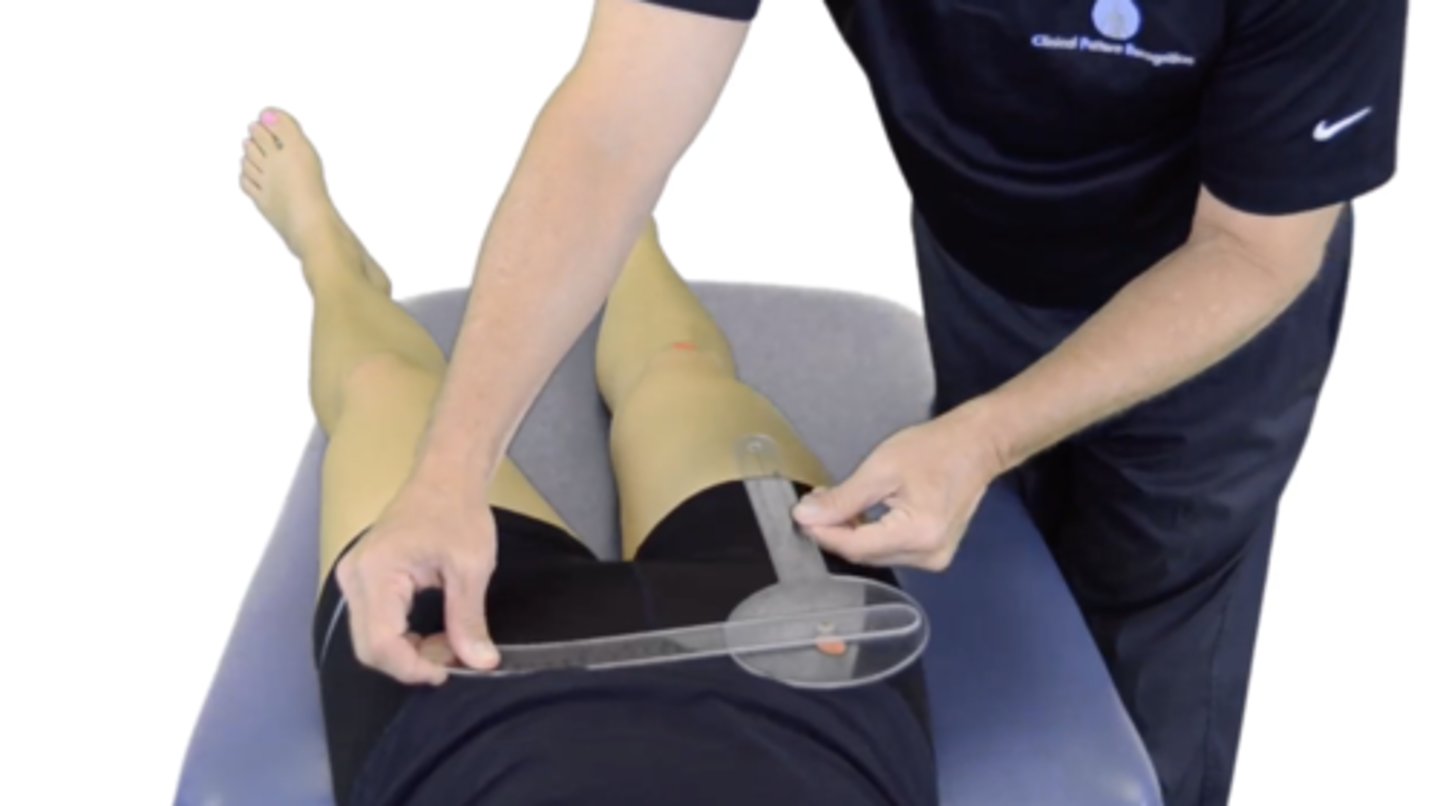
Hip IR (45)
NOTE: stabilize lower thigh and palpate the trochlear and iliac crest to assess for pelvic compensation/movement
Which assessment is this? What is normal ROM?
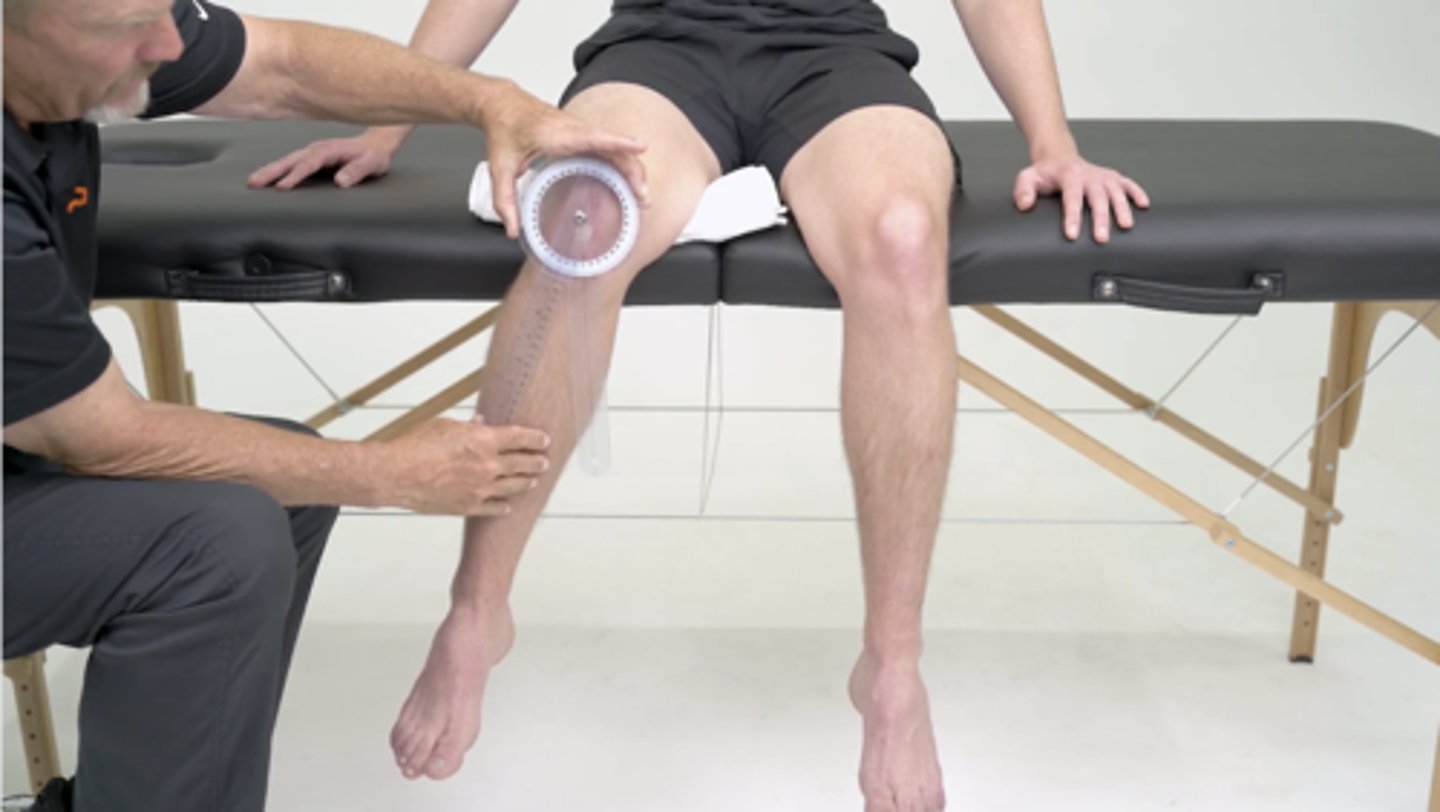
Hip ER (45)
Which assessment is this? What is normal ROM?
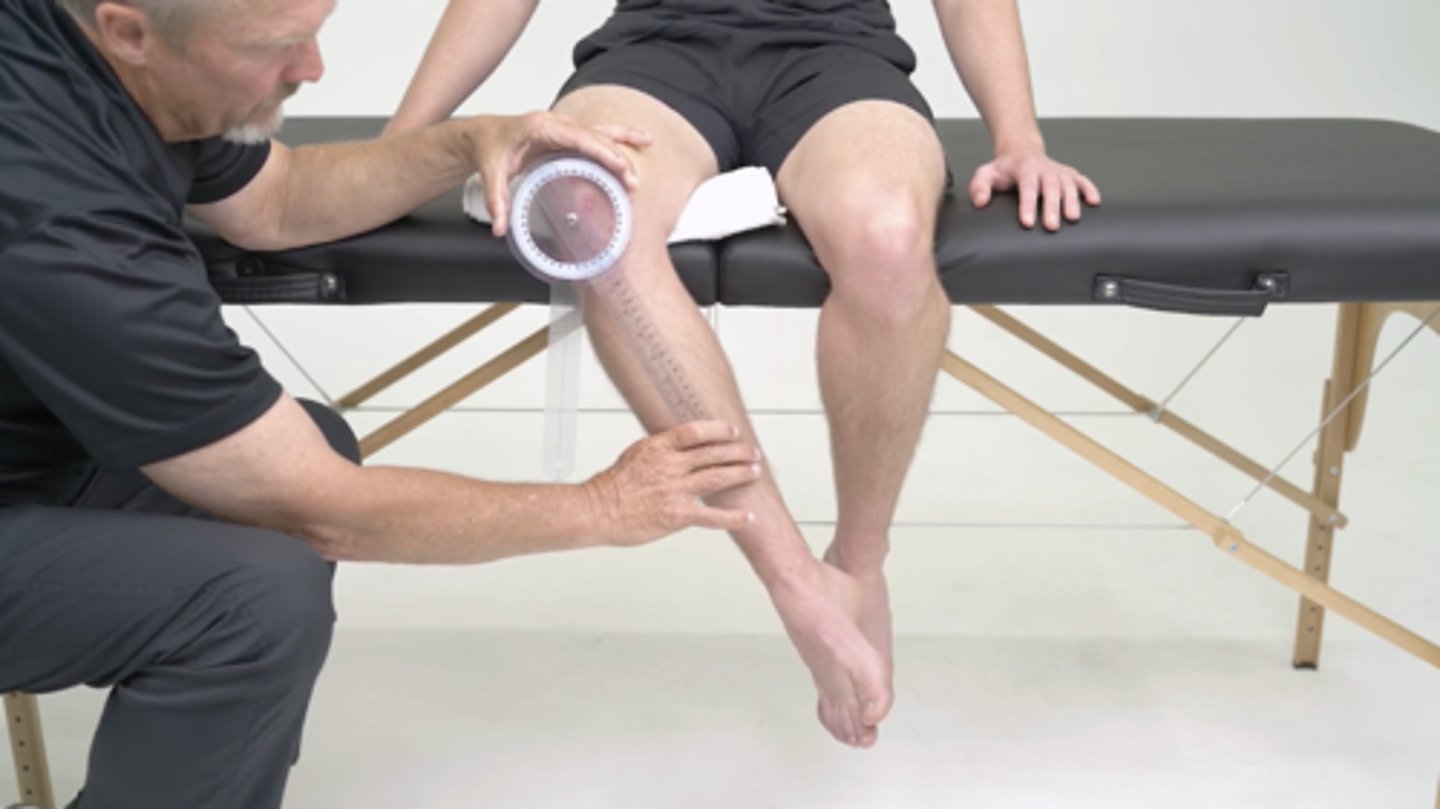
Knee extension (0-5)
Which assessment is this? What is normal ROM?
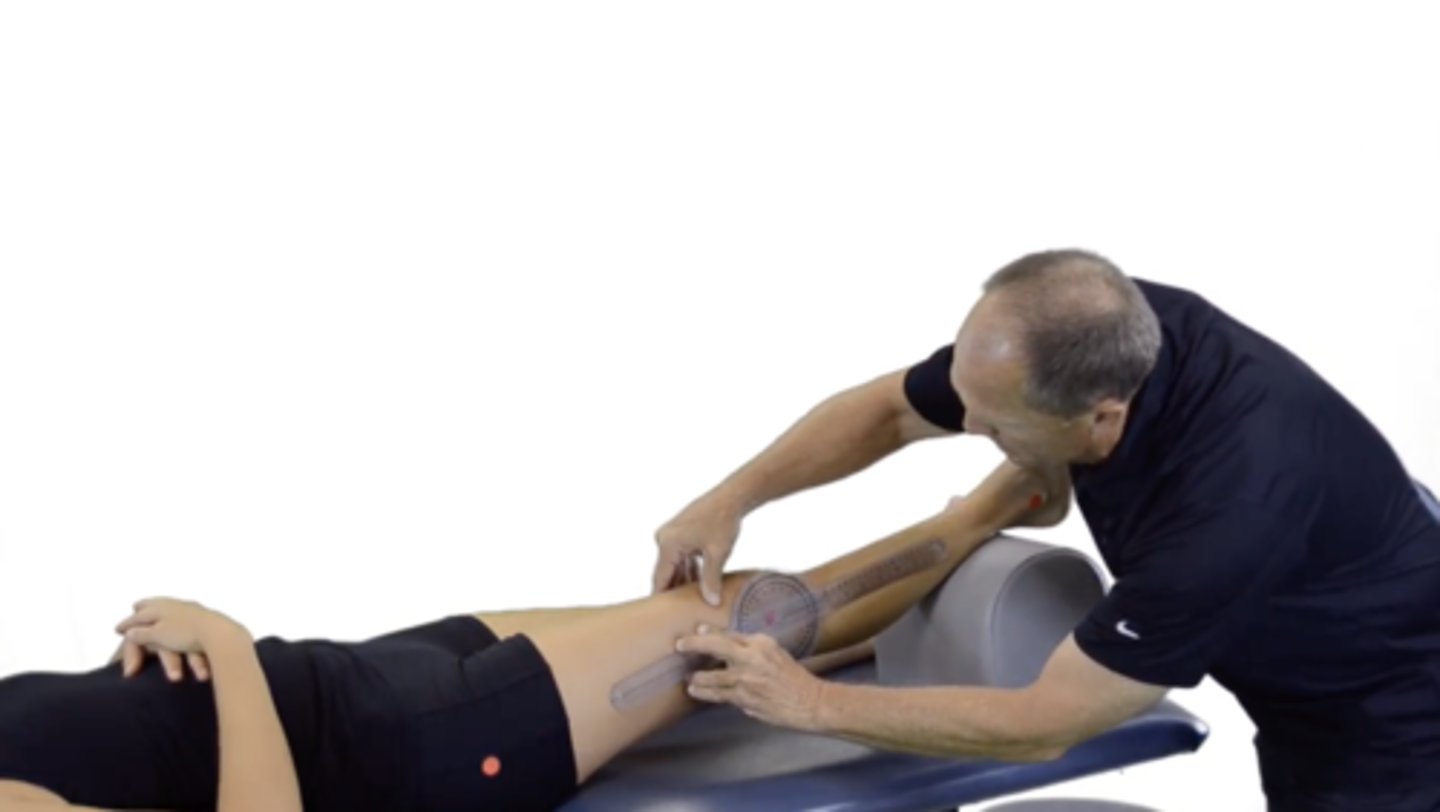
Knee flexion (135)
Which assessment is this? What is normal ROM?

Ankle DF (20)
NOTE: this position allows you to look at pure joint restriction @ the ankle by taking the gastrocnemius out of the equation
Which assessment is this? What is normal ROM?
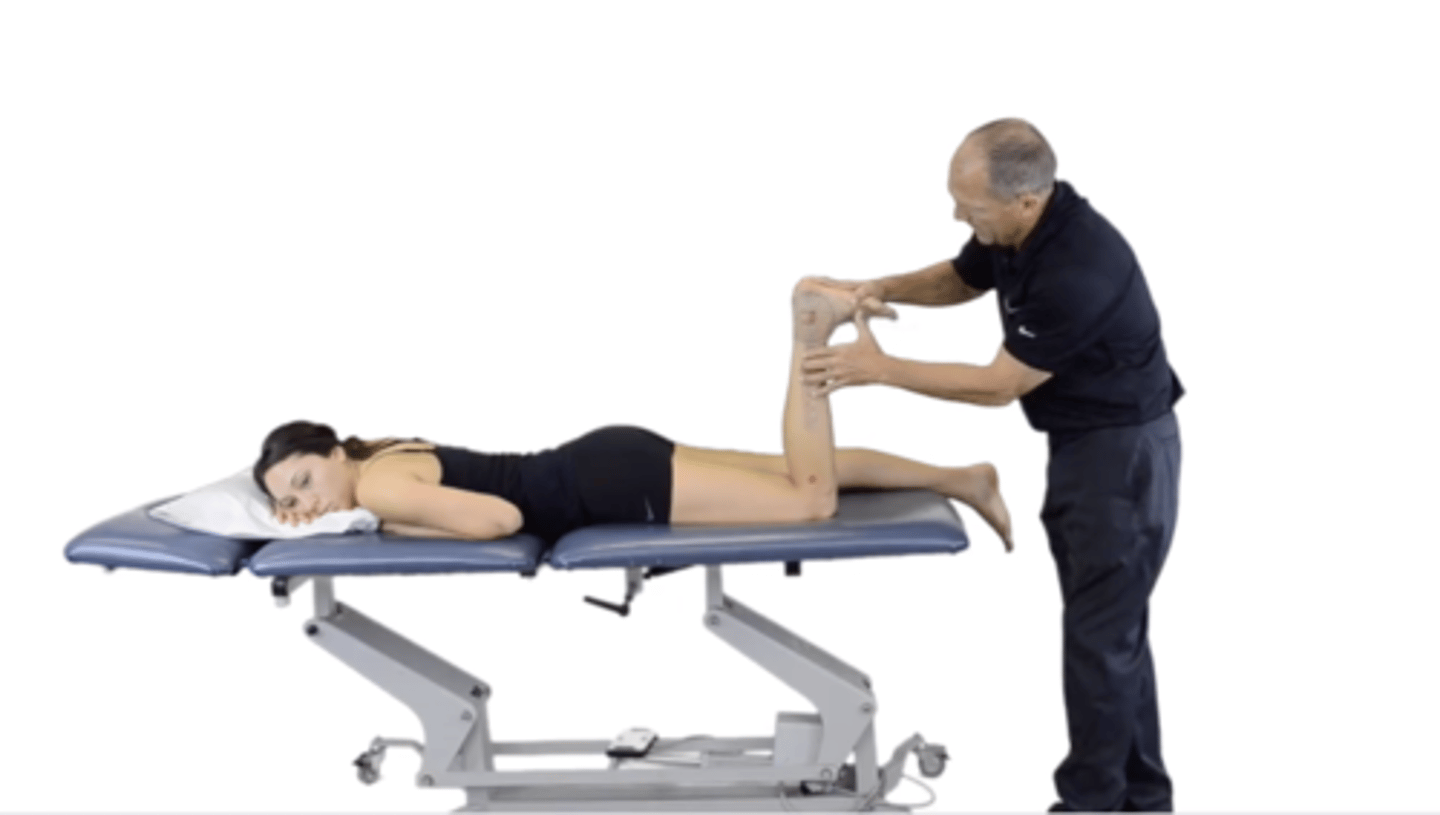
Ankle PF (50)
Which assessment is this? What is normal ROM?
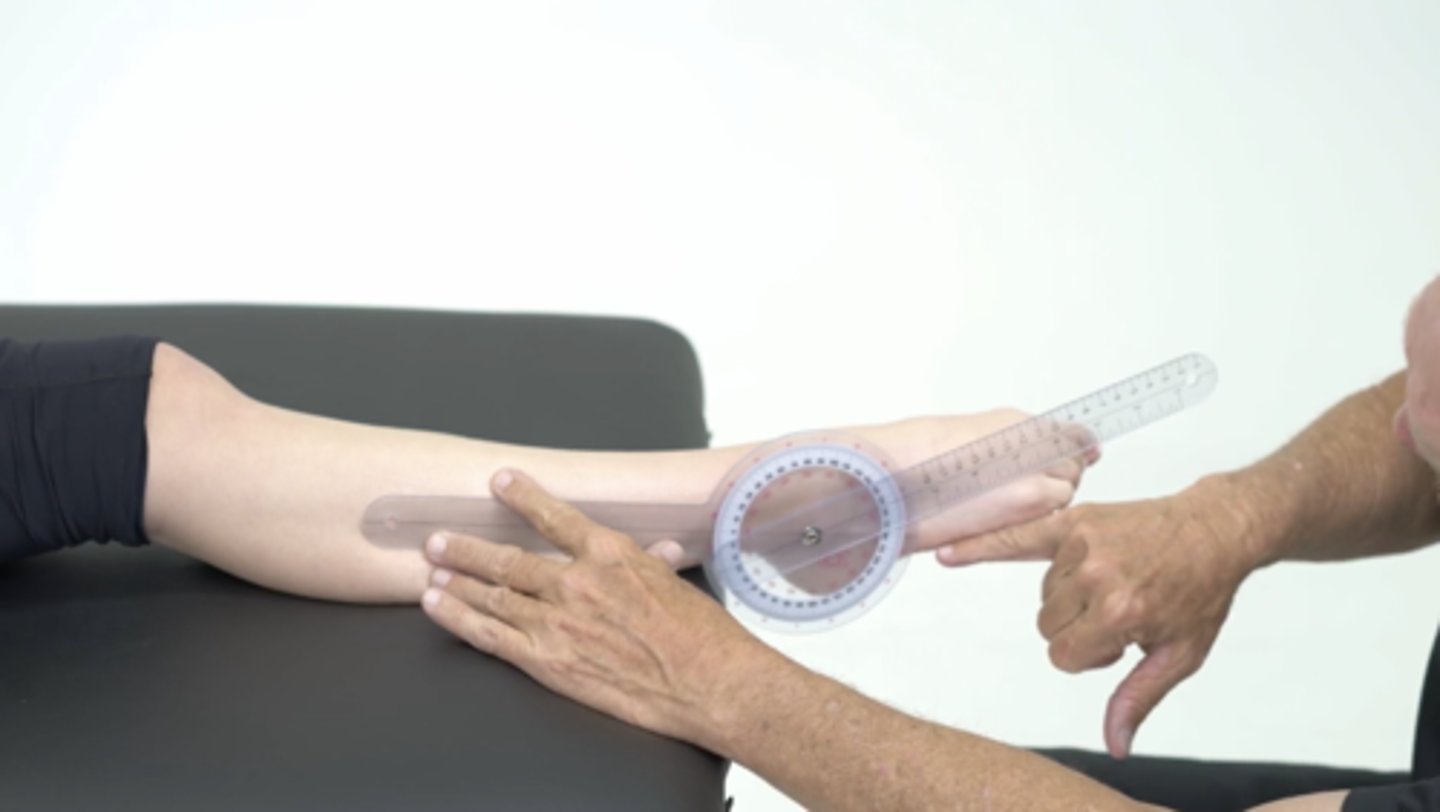
Ankle inversion - tarsal joints (35)
NOTE: this assesses the inversion component of supination
Which assessment is this? What is normal ROM?
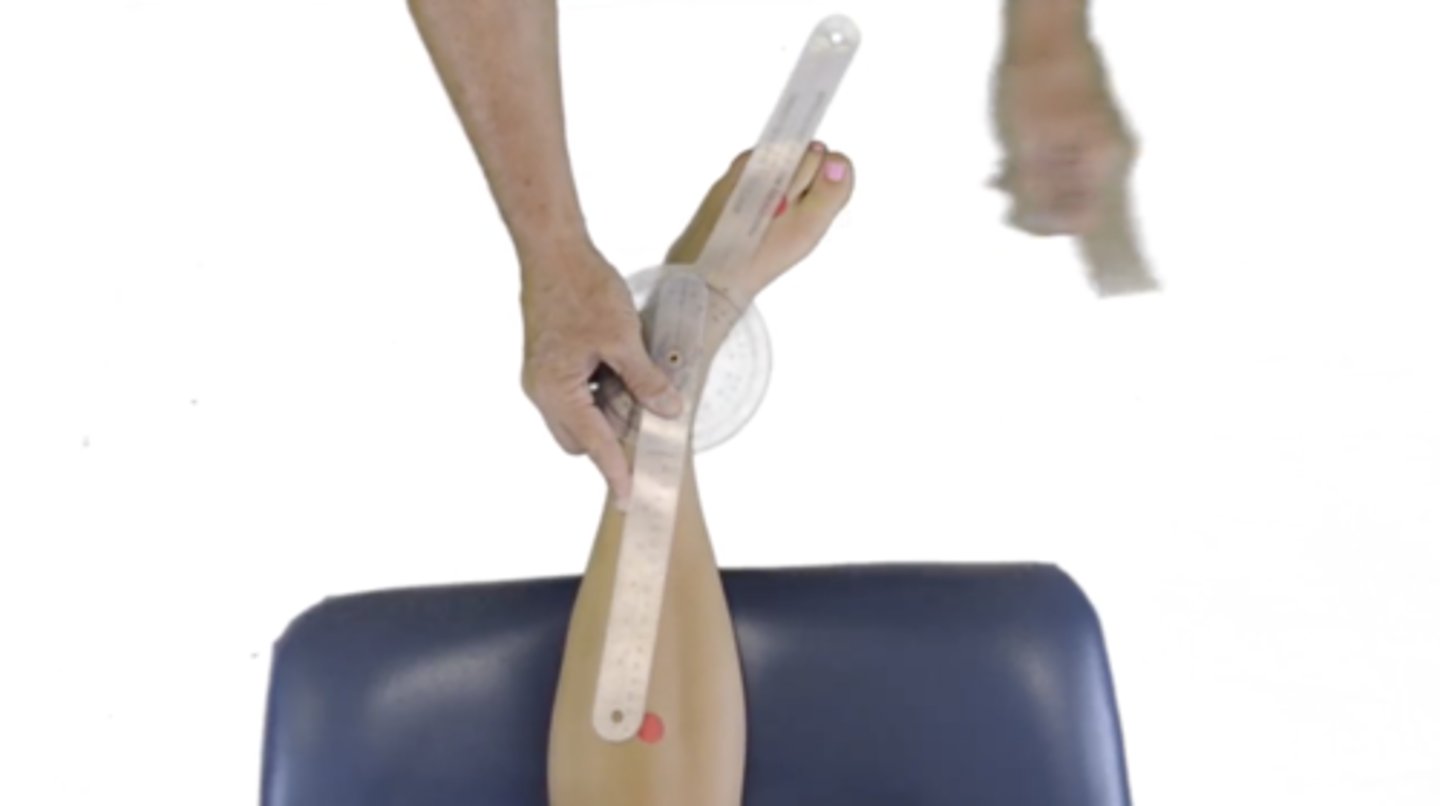
Ankle eversion - tarsal joints (20)
NOTE: this assesses the eversion component of pronation
Which assessment is this? What is normal ROM?

Ankle inversion - subtalar (5)
Which assessment is this? What is normal ROM?
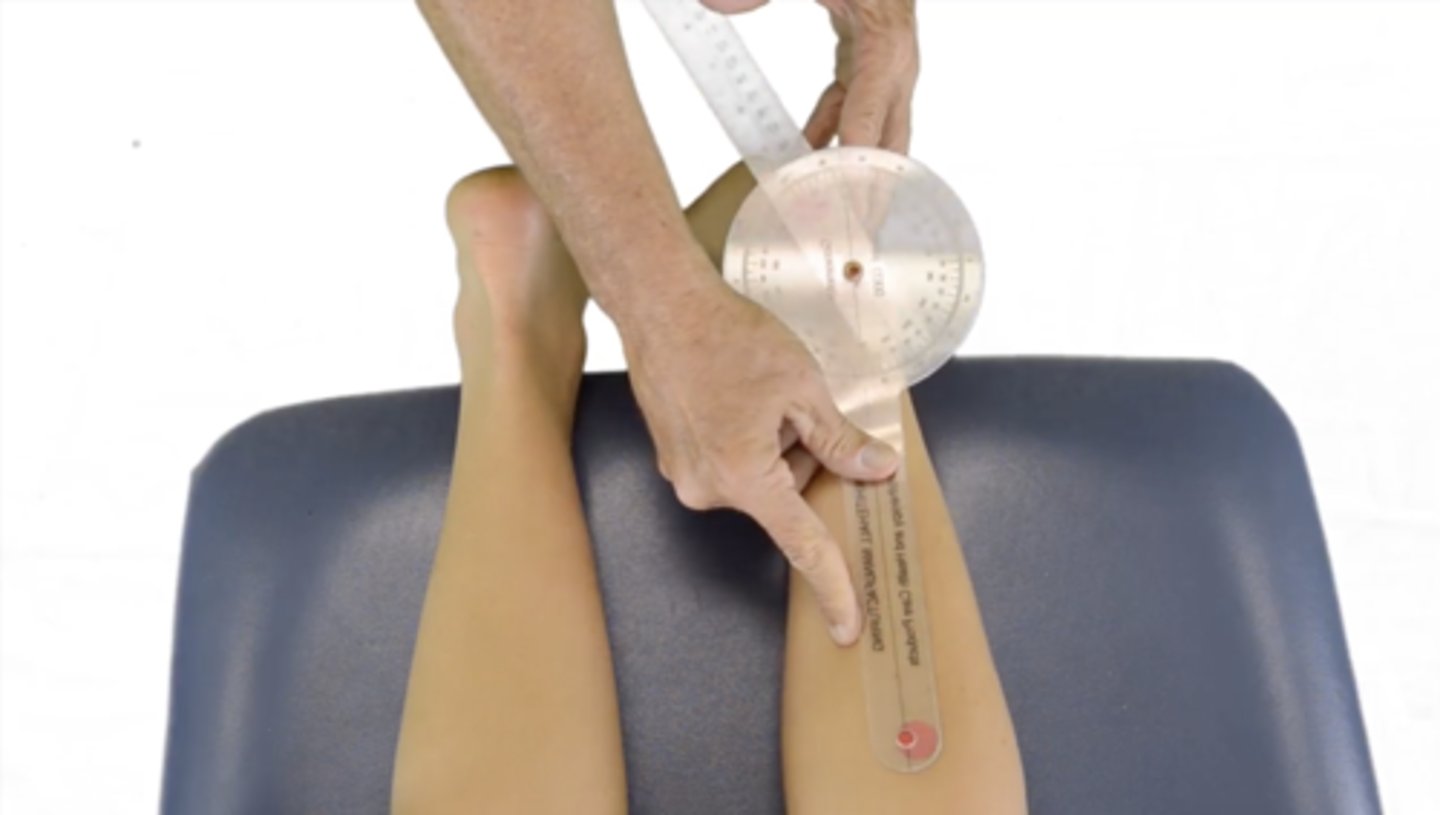
Ankle eversion - subtalar (5)
Which assessment is this? What is normal ROM?
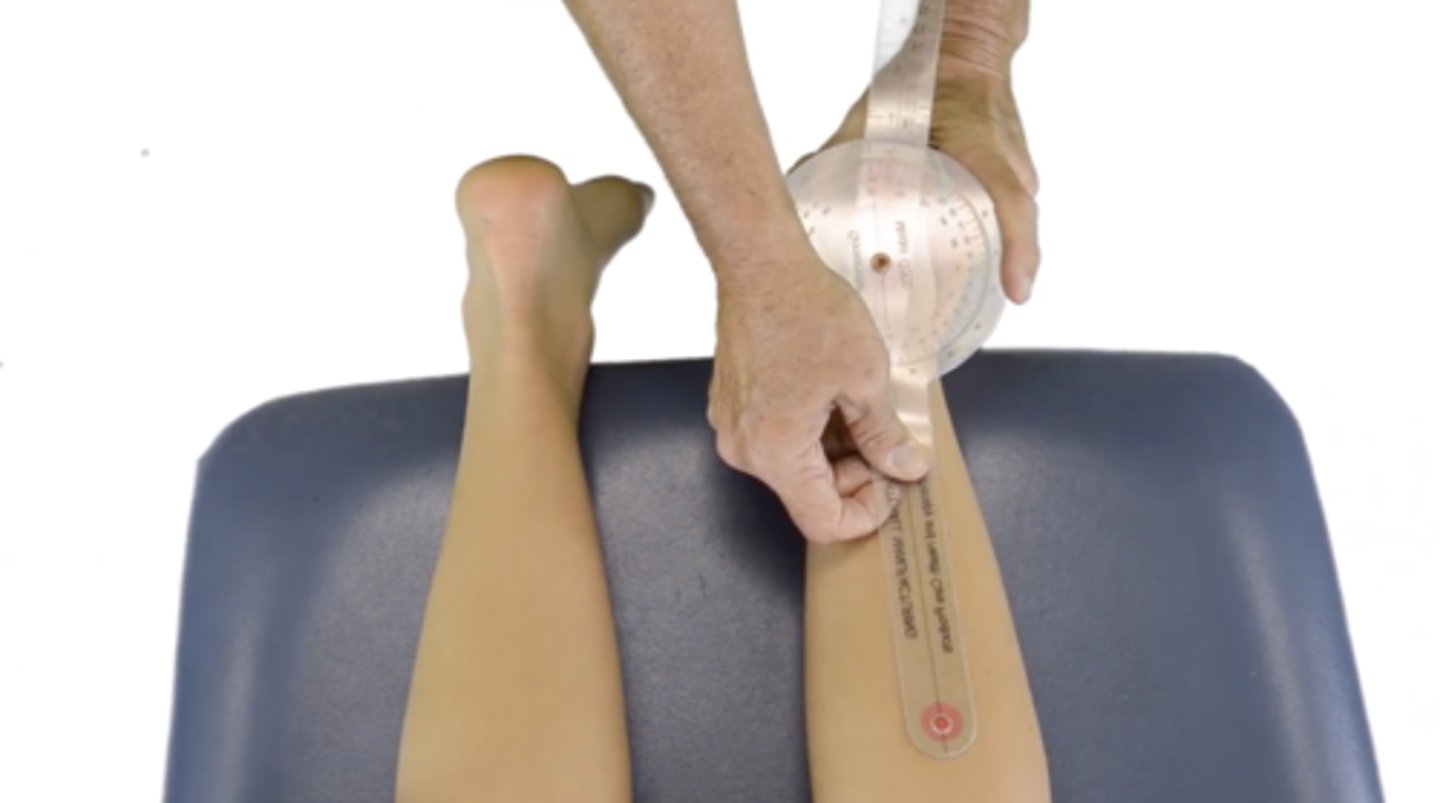
Big toe MTP flexion (45)
Which assessment is this? What is normal ROM?
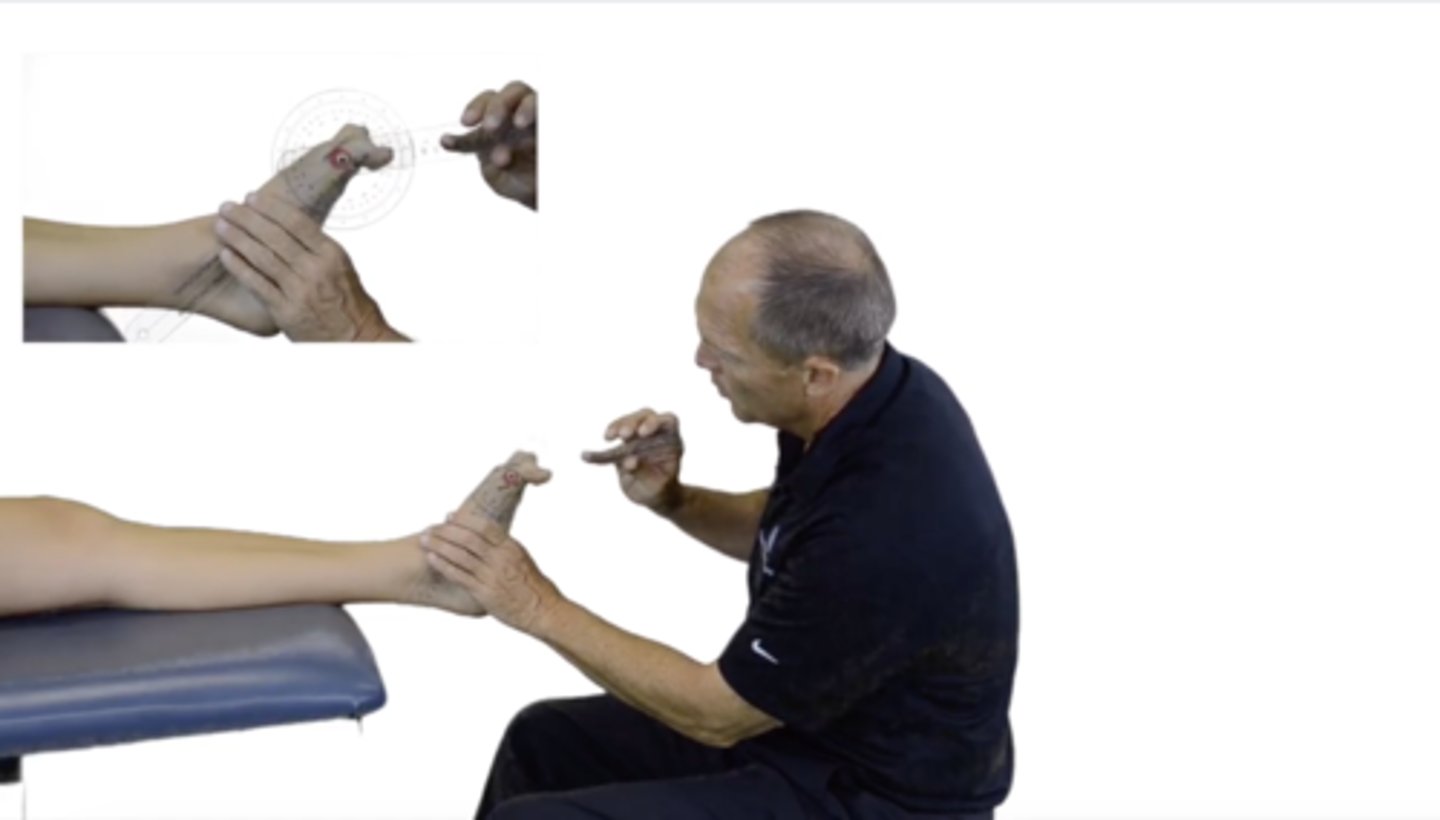
Big toe MTP extension (70)
Which assessment is this? What is normal ROM?
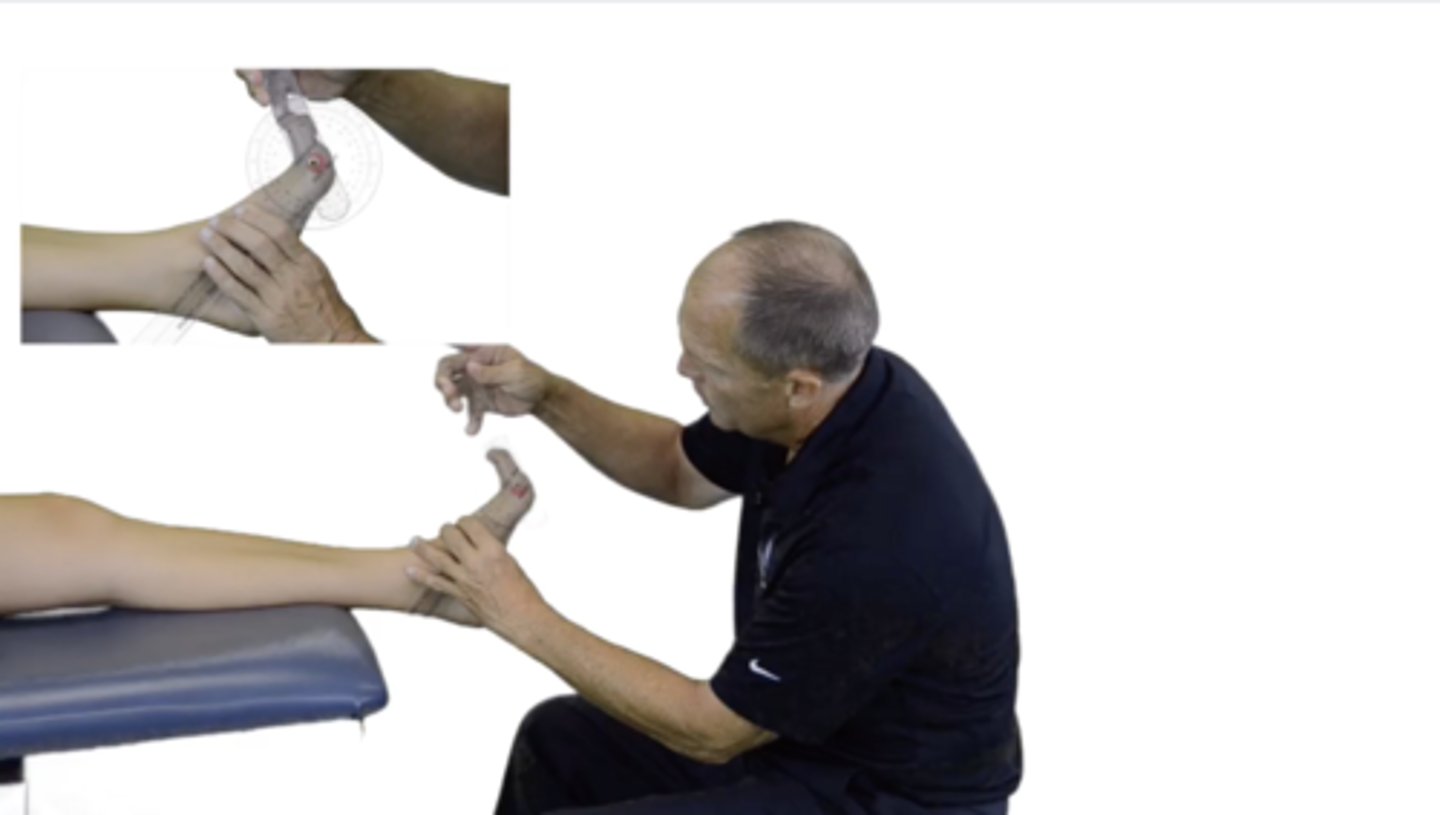
Big toe MTP abduction (no norms)
Which assessment is this? What is normal ROM?

Big toe MTP adduction (no norms)
Which assessment is this? What is normal ROM?
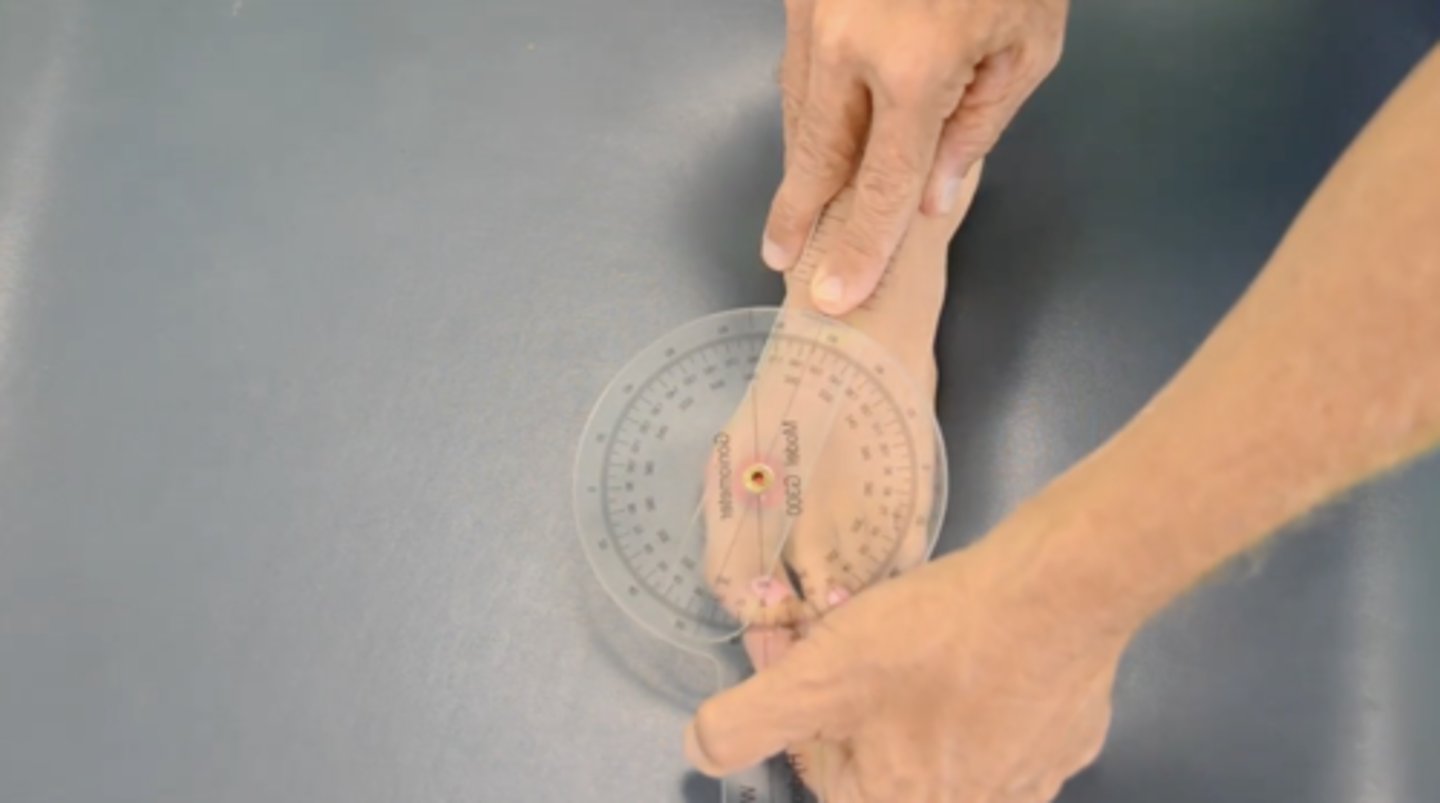
Toes 2-5 PIP & DIP flexion (PIP = 35, DIP = 60)
NOTE: extension is not typically tested, but it would be completed in a similar manner on the plantar side
Which assessment is this? What is normal ROM?

Hip flexion - illiopsoas (gravity)
Which assessment is this? Which muscles are involved? Gravity vs. gravity-eliminated?

Hip extension - gluteus maximus & hamstrings (gravity)
Which assessment is this? Which muscles are involved? Gravity vs. gravity-eliminated?
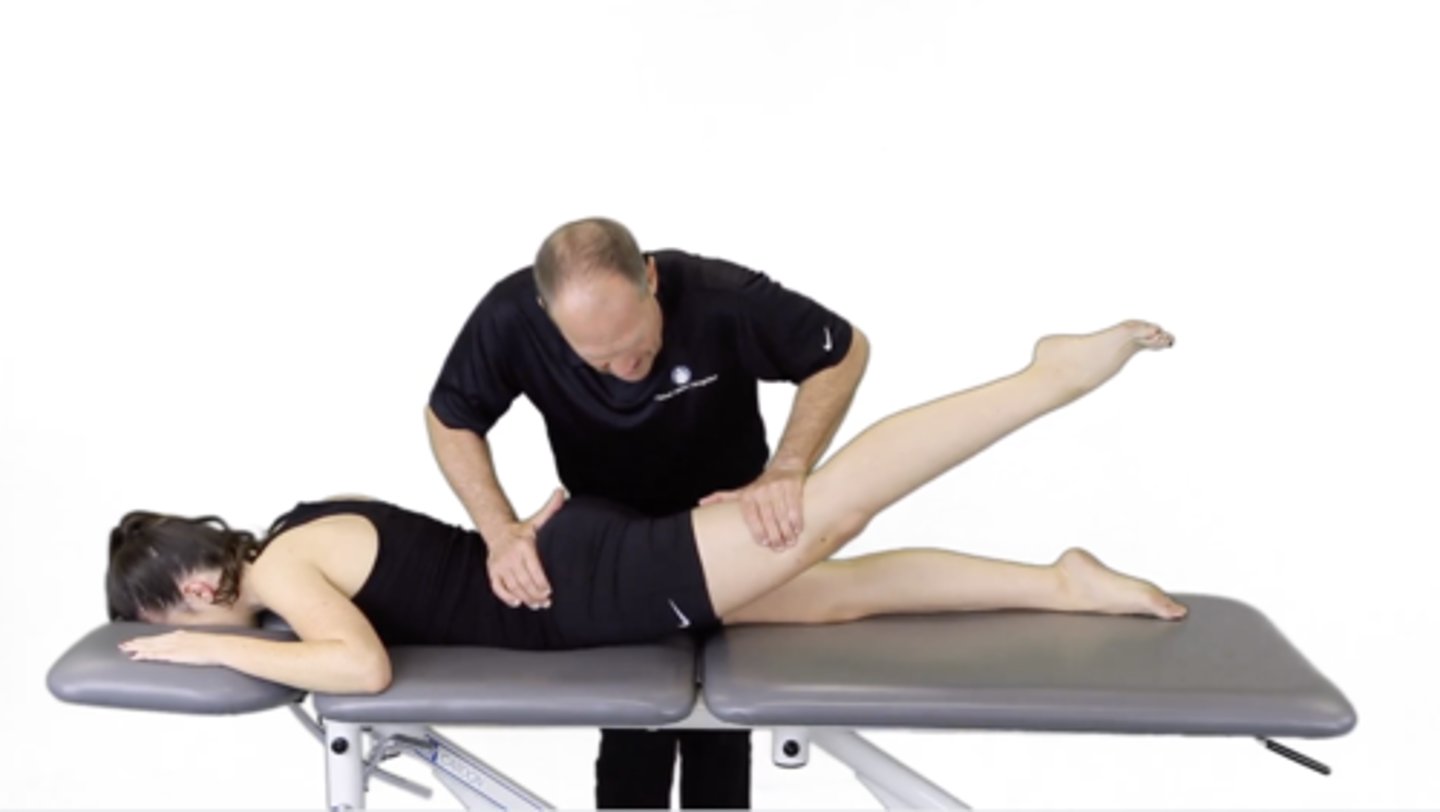
Hip extension alt. - gluteus maximus & hamstrings (gravity)
NOTE: this position is a good alternative if tight hip flexors are limiting the standard prone position
Which assessment is this? Which muscles are involved? Gravity vs. gravity-eliminated?
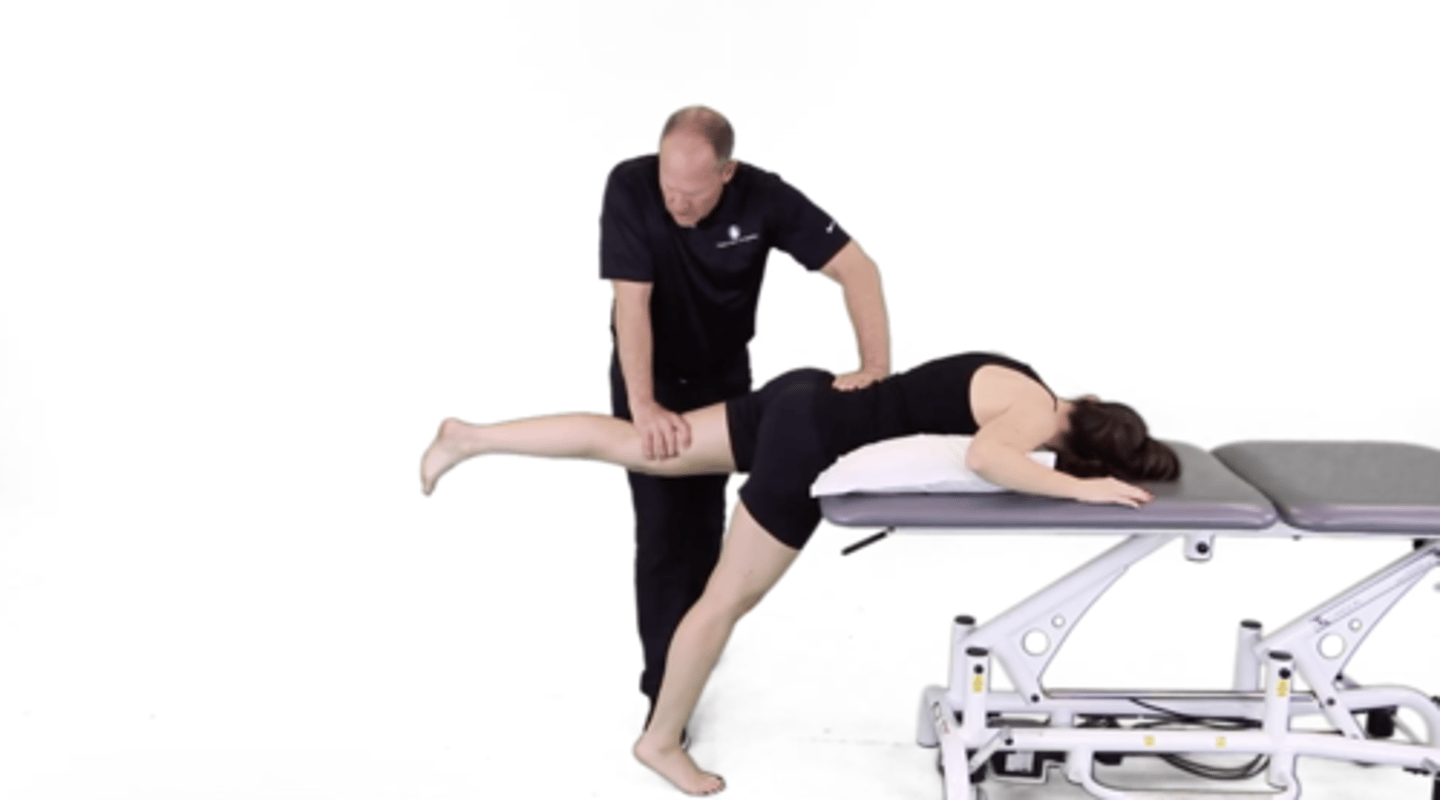
Knee flexion - biceps femoris (gravity)
NOTE: if you turned the foot inwards instead of outwards, you would instead be biasing the semimembranosus and semitendinosus
Which assessment is this? Which muscles are involved? Gravity vs. gravity-eliminated?
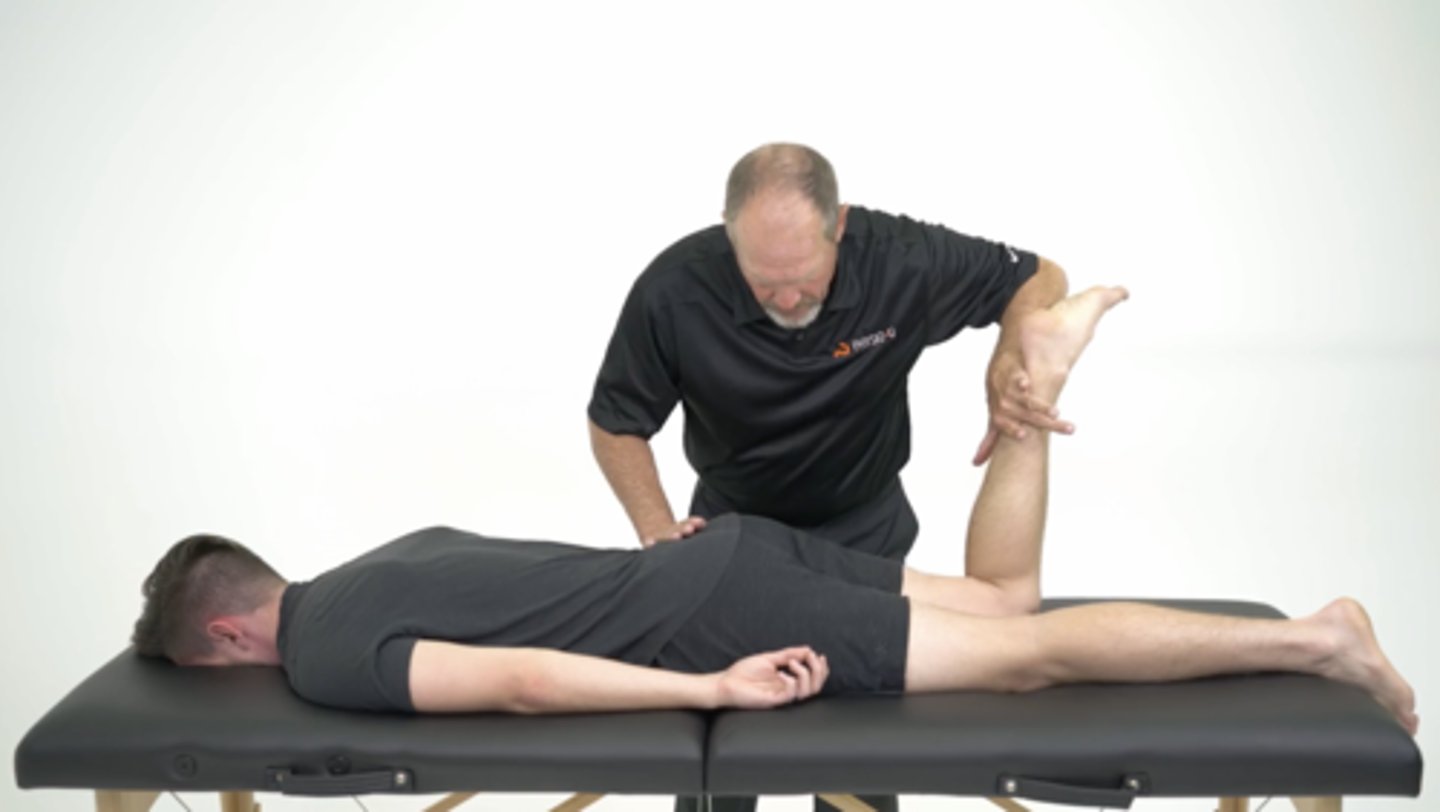
Knee extension - quads (gravity)
Which assessment is this? Which muscles are involved? Gravity vs. gravity-eliminated?

Ankle PF - gastrocnemius, soleus (gravity)
Which assessment is this? Which muscles are involved? Gravity vs. gravity-eliminated?

Ankle PF - soleus (gravity)
Which assessment is this? Which muscles are involved? Gravity vs. gravity-eliminated?

Ankle DF + inversion - tibialis anterior (gravity)
Which assessment is this? Which muscles are involved? Gravity vs. gravity-eliminated?

Ankle PF + subtalar inversion - tibialis posterior (gravity)
Which assessment is this? Which muscles are involved? Gravity vs. gravity-eliminated?
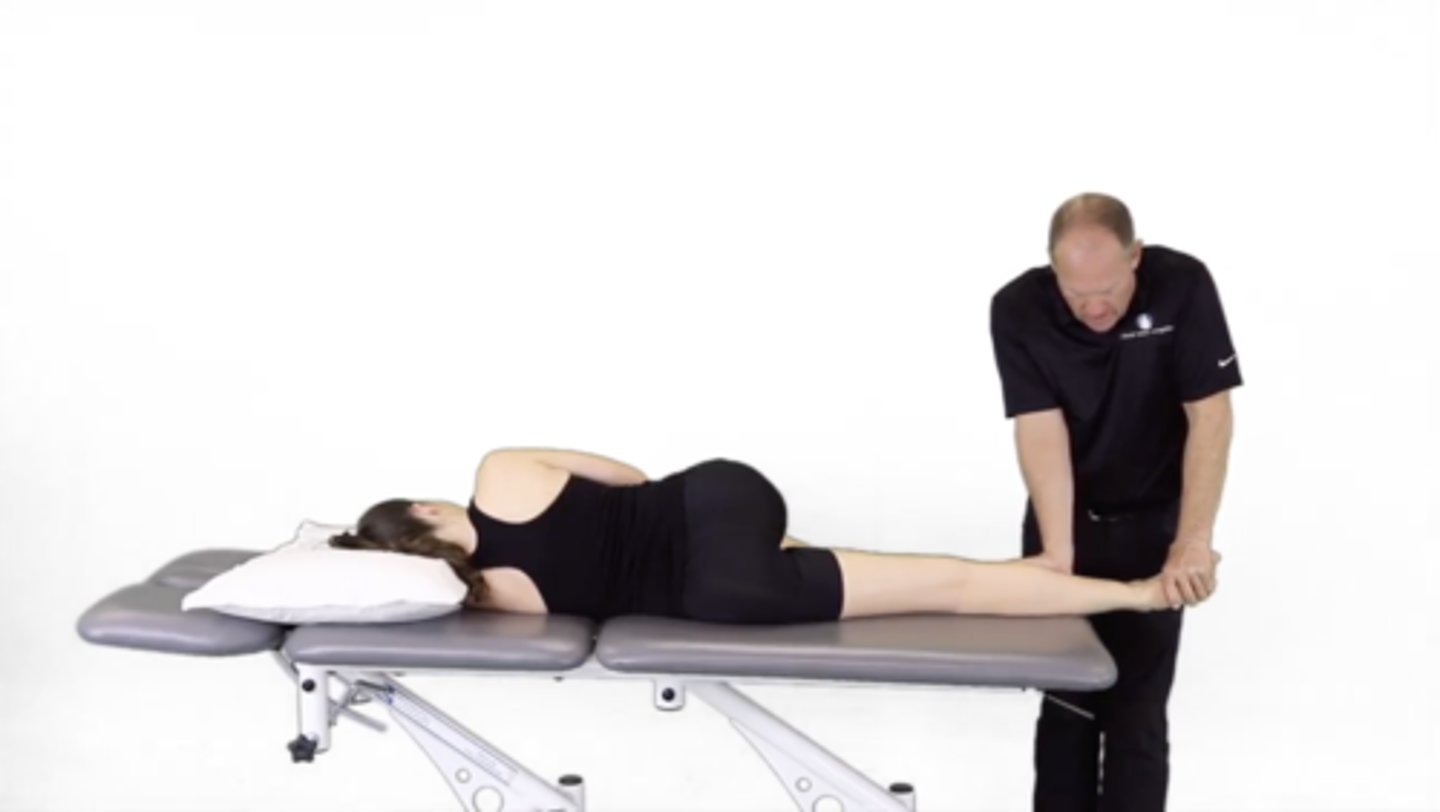
Ankle PF + subtalar inversion alt. - tibialis posterior (gravity)
Which assessment is this? Which muscles are involved? Gravity vs. gravity-eliminated?

Ankle PF + subtalar eversion - fibularis longus & brevis (gravity)
Which assessment is this? Which muscles are involved? Gravity vs. gravity-eliminated?

Ankle PF + subtalar eversion alt. - fibularis longus & brevis (gravity)
Which assessment is this? Which muscles are involved? Gravity vs. gravity-eliminated?

Toe MTP flexion - lumbricals & flexor hallucis brevis (gravity & gravity-eliminated)
Which assessment is this? Which muscles are involved? Gravity vs. gravity-eliminated?
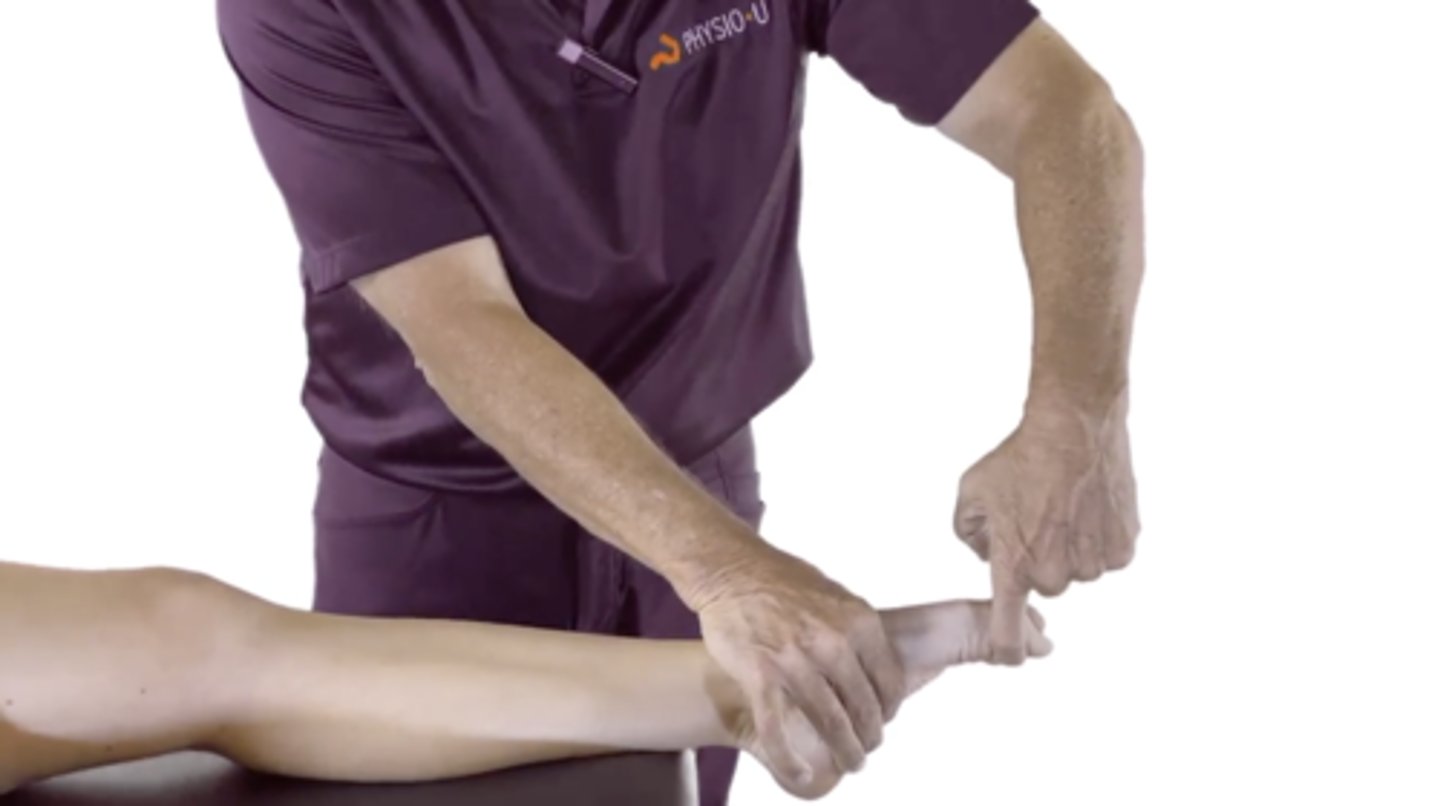
Toe IP flexion - flexor hallucis longus, flexor digitorum longus, flexor digitorum brevis (gravity & gravity-eliminated)
Which assessment is this? Which muscles are involved? Gravity vs. gravity-eliminated?
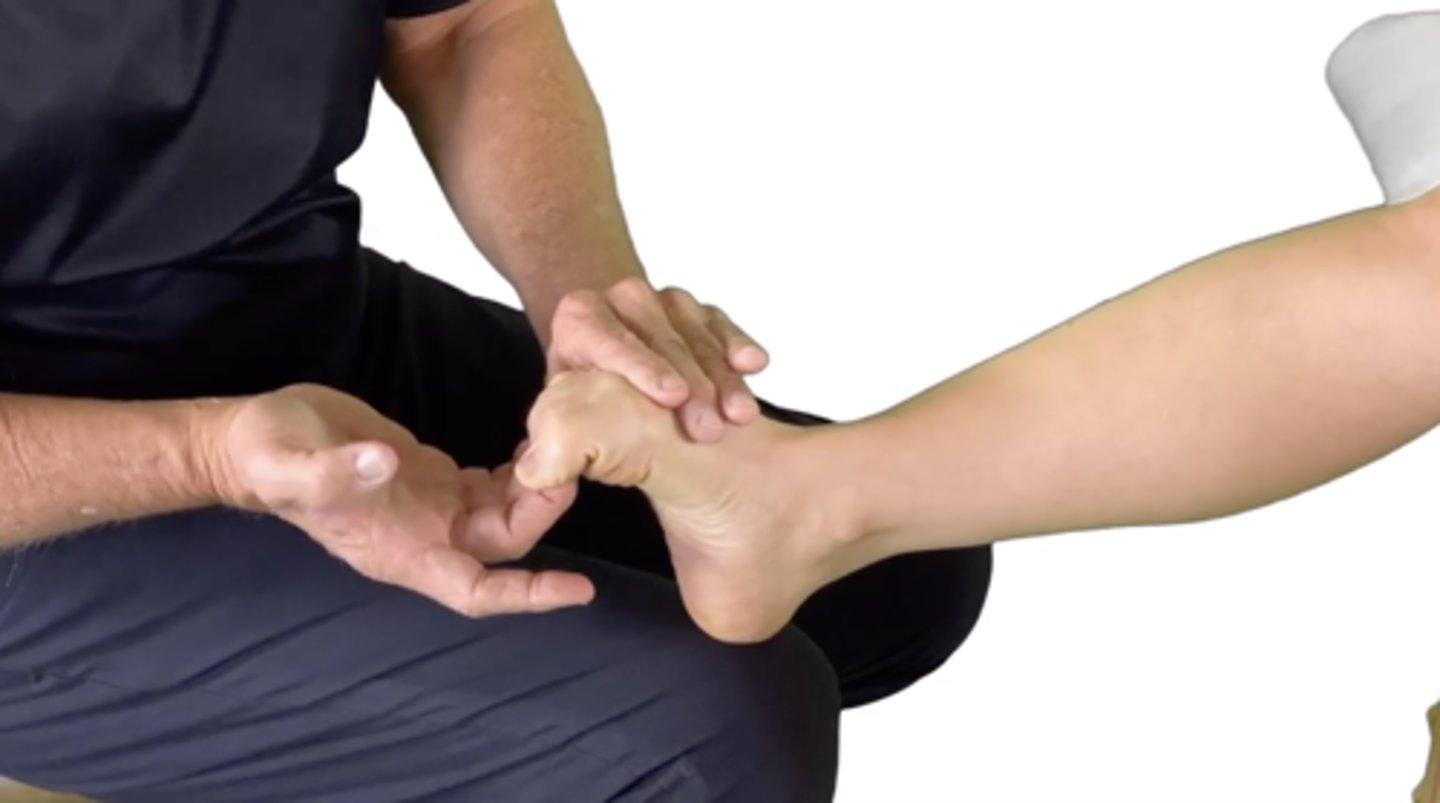
Toe IP extension - extensor digitorum longus & brevis (gravity & gravity-eliminated)
Which assessment is this? Which muscles are involved? Gravity vs. gravity-eliminated?
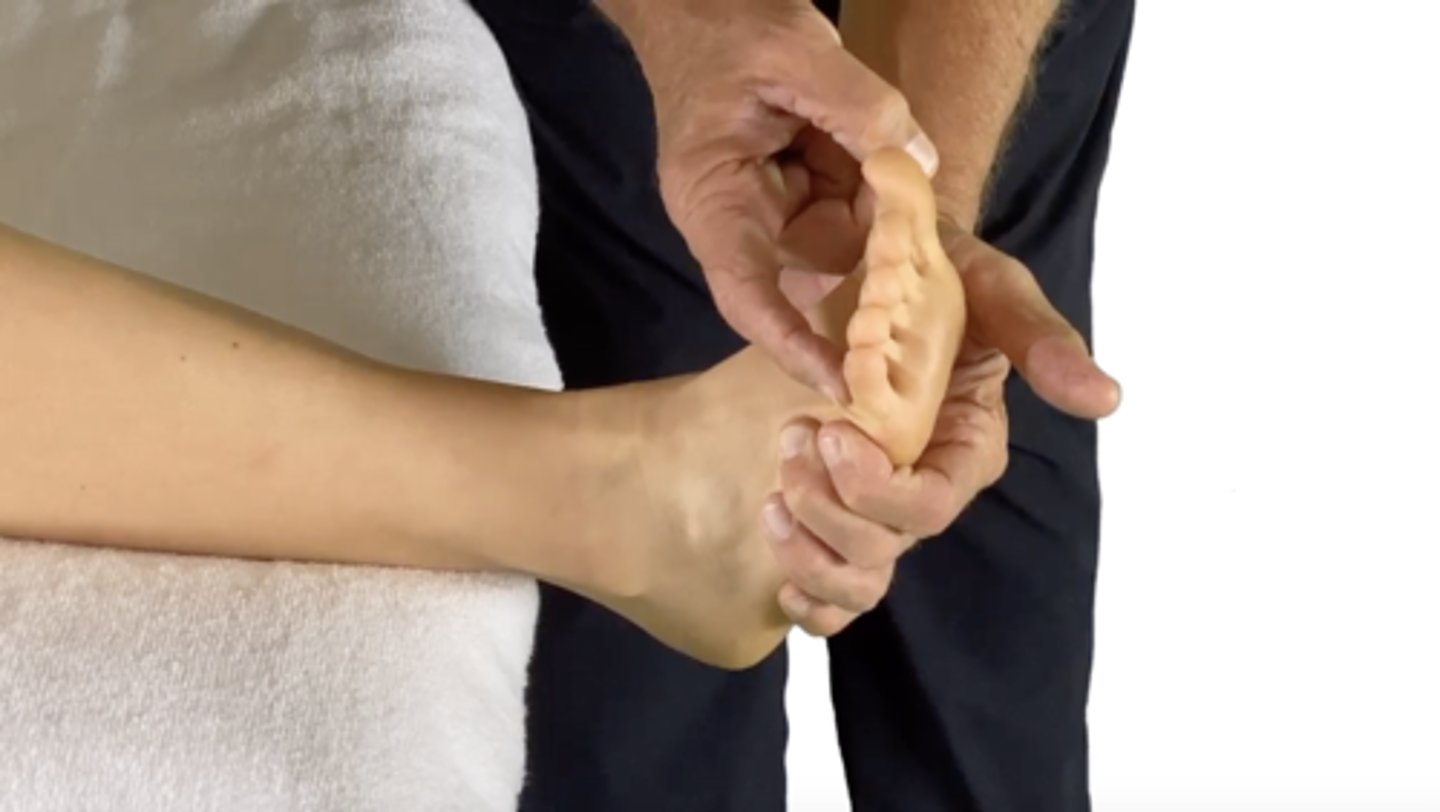
Thoracolumbar rotation (no norms)
Which assessment is this? What is normal ROM?

Pelvic elevation/hip-hiking - QL (gravity & gravity-eliminated)
Which assessment is this? Which muscles are involved? Gravity vs. gravity-eliminated?

Trunk flexion - rectus abdominus (gravity & gravity-eliminated)
NOTE: this is position #2/medium-level difficulty--position #1 (hardest) = hands behind head, position #3 (easiest) = arms straight
Which assessment is this? Which muscles are involved? Gravity vs. gravity-eliminated?
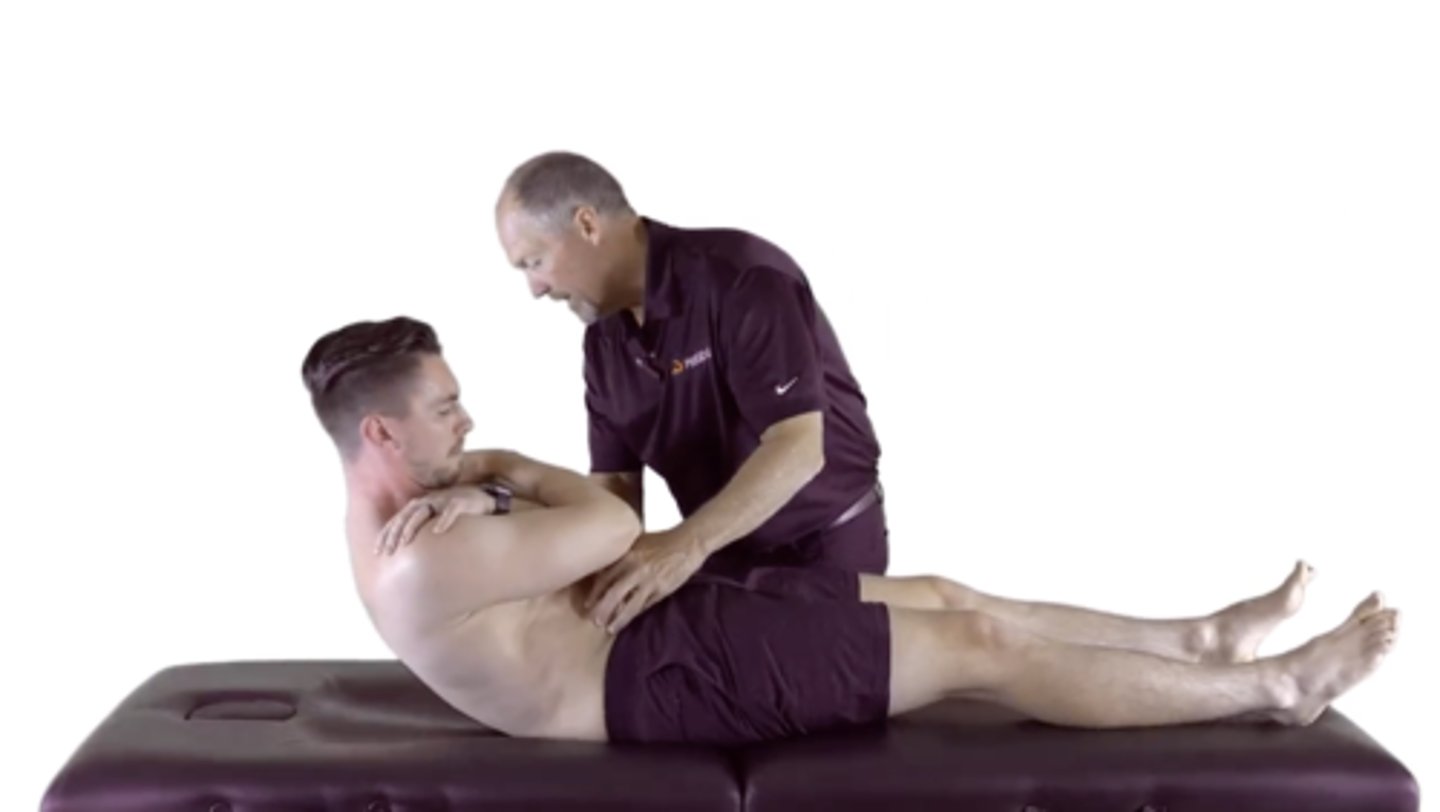
Trunk flexion alt. leg lowering - rectus abdominus (gravity & gravity-eliminated)
NOTE: patient must be able to fully lower their legs to the table while maintaining pelvic and lumbar stability
Which assessment is this? Which muscles are involved? Gravity vs. gravity-eliminated?
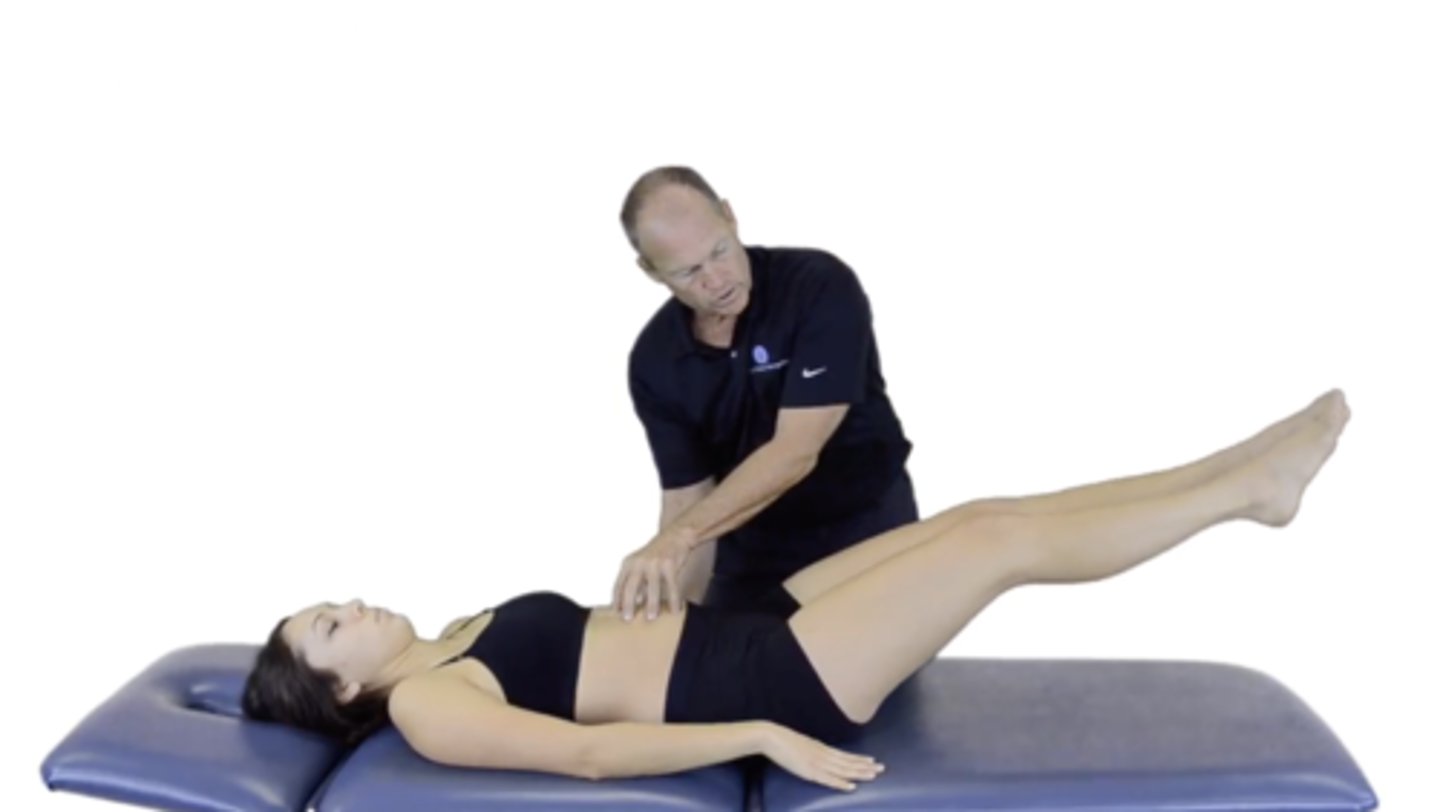
Trunk rotation - IO & EO (gravity & gravity-eliminated)
NOTE: similar to trunk flexion, there is a sequence of positioning based on difficulty
Which assessment is this? Which muscles are involved? Gravity vs. gravity-eliminated?
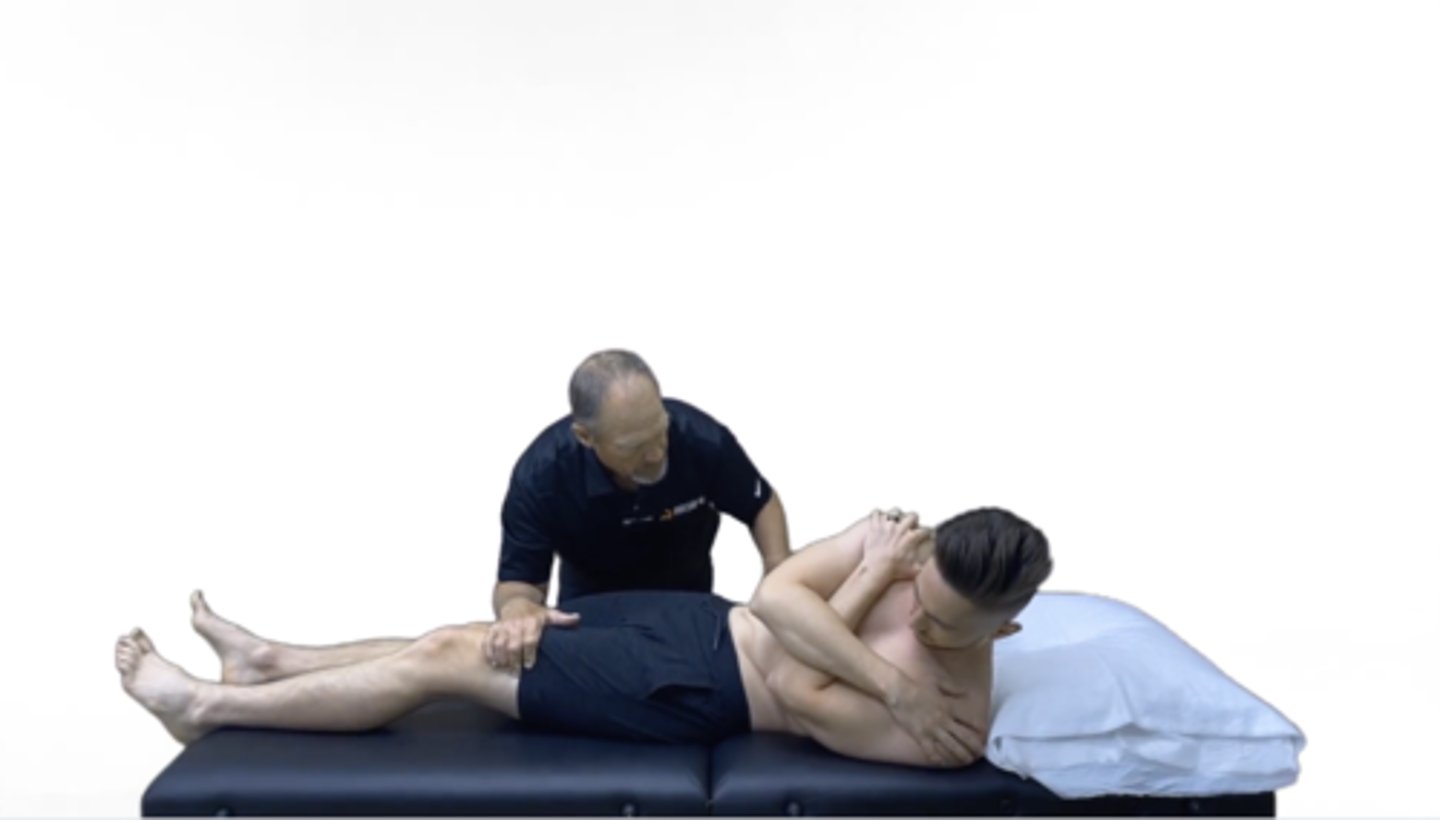
Trunk extension - iliocostalis, longissimus, spinalis, multifi, rotatores
NOTE: similar to trunk flexion, there is a sequence of positioning based on difficulty (this is position #2)
Which assessment is this? Which muscles are involved? Gravity vs. gravity-eliminated?
